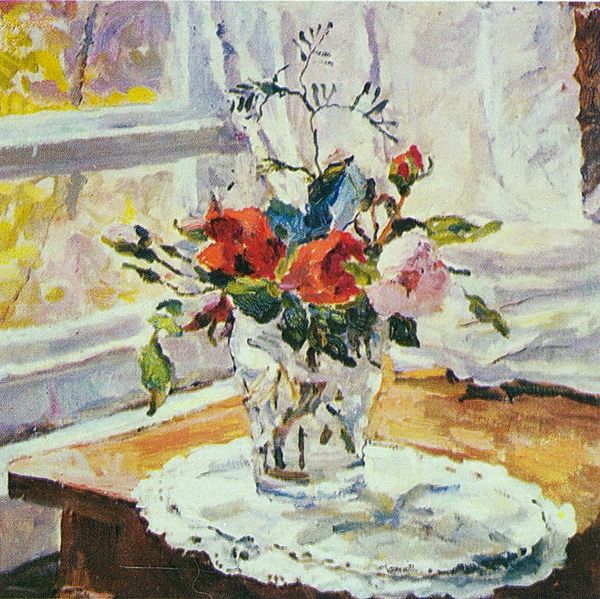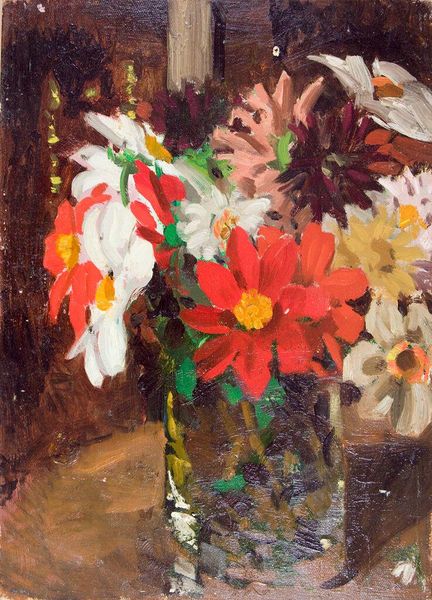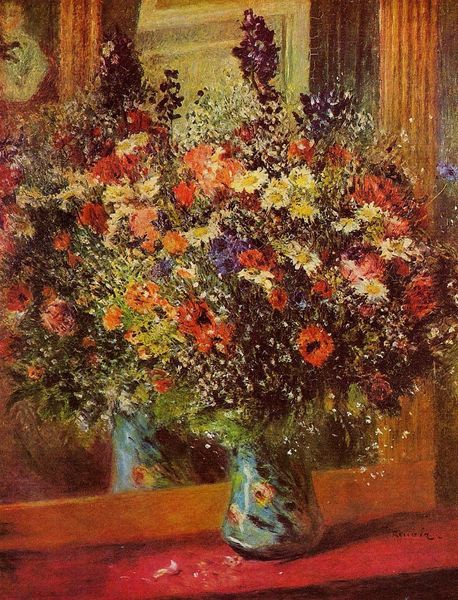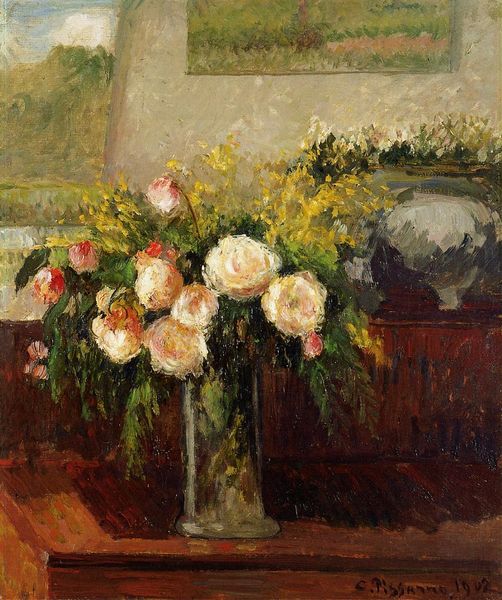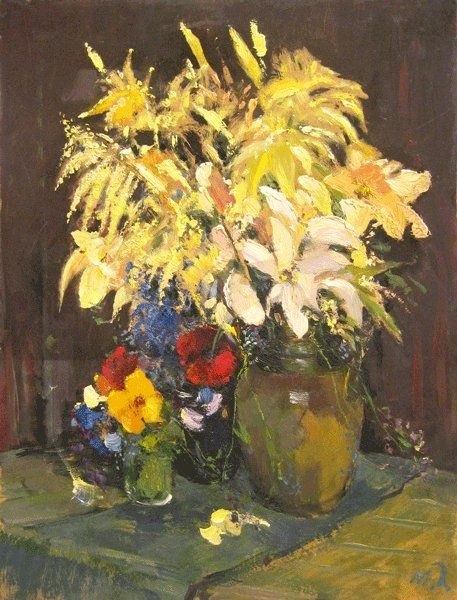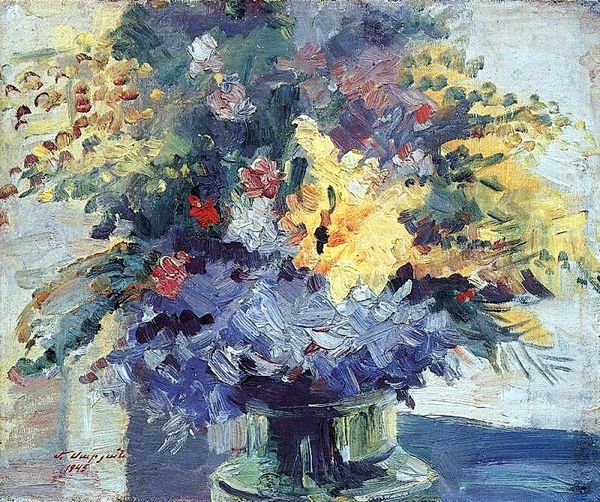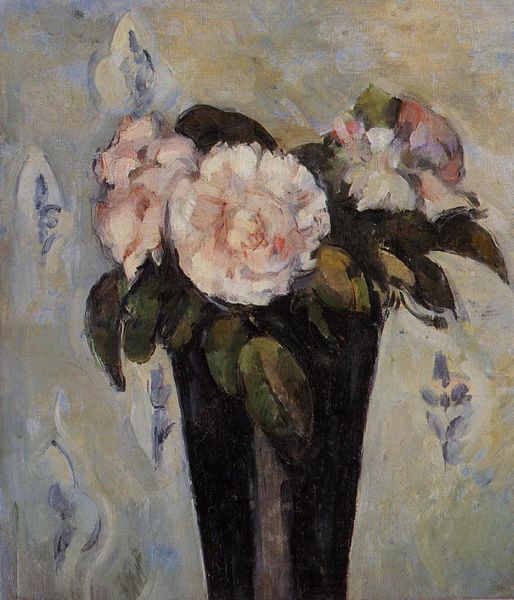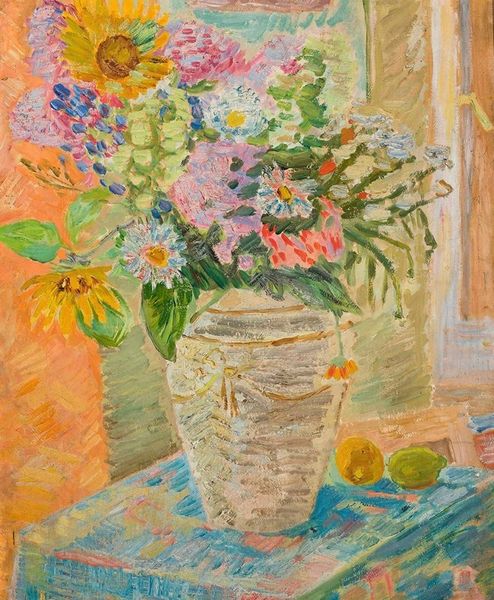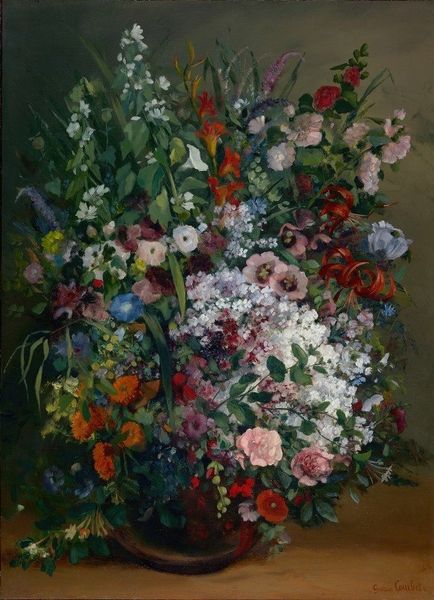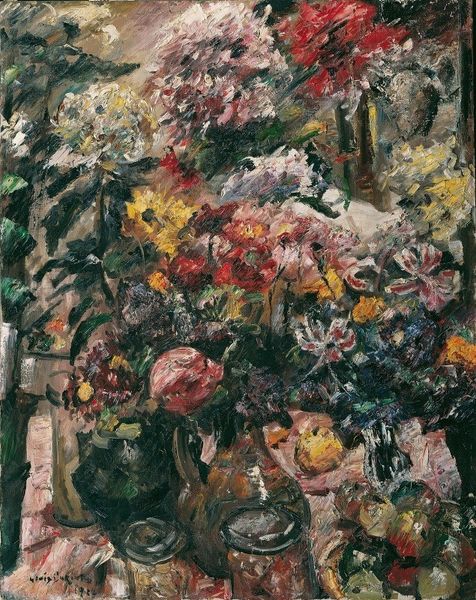
painting, oil-paint
portrait
painting
oil-paint
oil painting
realism
Copyright: Public domain
Editor: So, here we have Ethel Léontine Gabain’s "Lilac and Tulips," painted in 1943. It's an oil painting. There’s something quietly somber about this still life, perhaps due to the muted tones and the visible brushstrokes. What do you make of it? Curator: Considering the time it was painted, 1943, during the height of World War II, this piece speaks volumes. It’s tempting to see a simple arrangement of flowers, but doesn't it also evoke a sense of fragility and resilience amidst conflict? Editor: That's an interesting perspective! I was focusing on the artist’s technique, but didn’t connect it to the broader historical context. Curator: Look closer, how are such still lifes presented in galleries or museums, and who traditionally creates and consumes them? Are those from upper social classes looking to beautify domestic spaces? In what way does it act as an act of quiet defiance against the backdrop of war and how did it present comforting imagery during such turbulent times? Editor: I see your point. It challenges my initial thought. It isn’t just about personal artistic expression, but how social context influences how the piece is being framed. Curator: Exactly! Considering that Gabain was known for her portraits and social realist scenes, this painting could be interpreted as a personal commentary—a quiet act of resistance through beauty, presented in such spaces where powerful wealthy can gaze on, even with the context. How subversive! Editor: I'm beginning to see that appreciating art is so much more than surface-level interpretation. We must remember the conditions from which art comes into the world, as much as its medium and aesthetic value. Thank you! Curator: Indeed, by thinking critically about how cultural and historical context shape art, we engage more thoughtfully with both the artist's intentions, the artwork and, eventually, the larger art ecosystem.
Comments
No comments
Be the first to comment and join the conversation on the ultimate creative platform.

